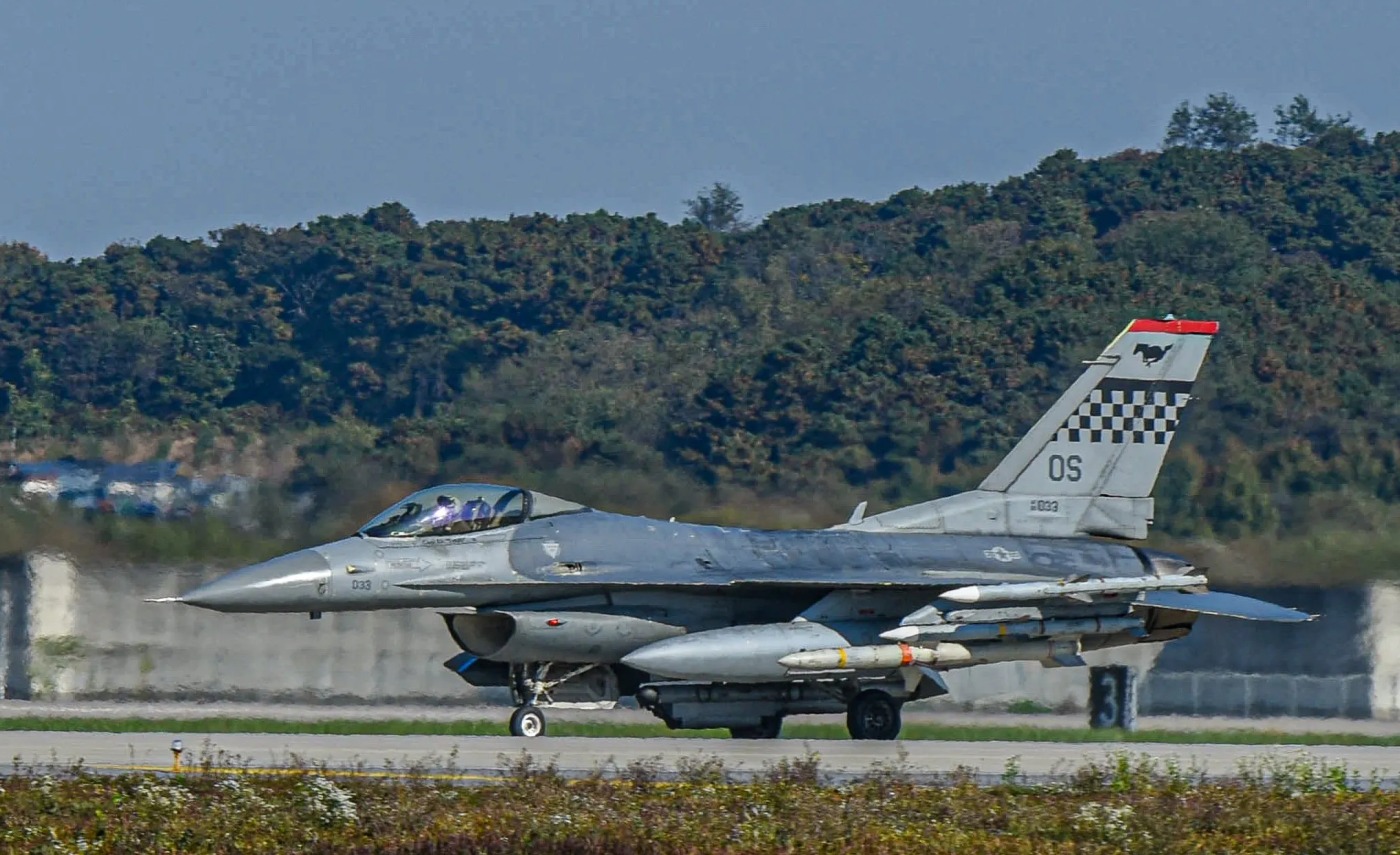Japan is gearing up to extend its maintenance services to include US F-15 and F-US fighters, alongside the existing F/A-18 and F-35 jets already serviced and repaired in Japan.
This expansion aims to streamline maintenance processes and reduce the costs of sending aircraft abroad for servicing. Tokyo seeks to integrate the servicing of F-15 and F-16 jets by 2025.
According to a report in Nikkei, Japanese companies Mitsubishi Heavy Industries and IHI, both known service providers for Japan’s Air Self-Defense Force (ASDF), are set to take on this responsibility.
Currently, US F-16s and F-15s are stationed at Misawa and Kadena air bases, respectively, with approximately 50 aircraft at each base as of 2022. However, these aircraft require full servicing every few years, necessitating flights to South Korea for maintenance.
These trips can take several days to weeks, incurring both time and financial costs. That being said, Japan’s decision to expand its aircraft servicing capabilities is part of a strategic shift in national security arrangements initiated in 2022 to enhance domestic capacity.
This re-evaluation gained momentum following the finalization of a Defense Industrial Cooperation, Acquisition, and Sustainment (DICAS) agreement between Japan and the US during April’s Japan-US summit. This agreement outlines plans for fully servicing US military aircraft within Japan’s borders.
Last year, Japan revealed that the private engineering company IHI would assume the task of repairing engines for F-35 fighter jets utilized by both Japan’s Self-Defense Forces and the US military.
Moreover, in collaboration with the United States, Japan is actively working to accommodate US Navy warships for extensive repairs at private shipyards. By enabling these ships to remain in Japanese waters for maintenance, Tokyo aims to bolster regional stability, particularly in the western Pacific, where the US Navy Seventh Fleet operates.
The latest efforts to expand maintenance services for US aircraft based in Japan complement these broader initiatives aimed at fortifying the country’s military infrastructure.
Japan Expanding Servicing Of US Jets Amid China Threats?
Upgrading servicing capabilities for US military assets in Japan comes amid heightened concerns over military threats, particularly from China.
Recent data reveals a significant increase in scrambles by Japan’s Air Self-Defense Force (ASDF) aircraft, with the majority being prompted by Chinese aircraft. In the fiscal year ending in March, approximately 669 scrambles were recorded, with 479 attributed to Chinese aircraft.
China has also demonstrated assertive behavior by flying drones between Yonaguni Island, part of Japan’s southernmost prefecture of Okinawa, and Taiwan. Additionally, Beijing has also increased its military cooperation with Moscow in the region.

A milestone in this heightened military cooperation occurred in November 2022, when Russian Tu-95MS Bear and Chinese H-6K bombers conducted joint patrols, followed by reciprocal landings in each other’s countries.
This event, unprecedented in its reciprocal nature, highlighted China’s utilization of Russian airspace for strategic military maneuvers.
These developments have galvanized Japan’s efforts to fortify its domestic defense industry, emphasizing the need for robust capabilities to support US aircraft and warships, particularly in scenarios involving conflicts in the Taiwan Strait.
By enhancing servicing and maintenance operations for US military assets in Japan, the turnaround time for returning these assets to service would be significantly reduced, bolstering regional security.
The Japanese government has already embarked on significant measures to strengthen its defense industry, including aligning domestic equipment standards with those of the United States and Europe.
US Unveils NGAS Aircraft Concept That Could Make Its F-35, F-22 Jets ‘Double Capable’ To Fight China
This harmonization aims to reduce maintenance costs, expand business opportunities for Japanese defense firms, and enhance interoperability with allies.
The move towards international standards is a strategic response to the rising costs associated with maintaining and replacing defense equipment components, exacerbated by advancements in radar and sensor technologies.
Traditionally, Japan’s Self-Defense Forces (SDF) equipment has adhered to proprietary standards, posing challenges to part interchangeability with allied forces.
However, by aligning defense equipment supply chains with those of allies and friendly nations, Tokyo seeks to establish complementary networks and deepen cooperation on procurement.
This strategic realignment aims to strengthen Japan’s defense capabilities while fostering closer ties with international partners amid evolving regional security dynamics.
- Contact the author at ashishmichel(at)gmail.)com
- Follow EurAsian Times on Google News




